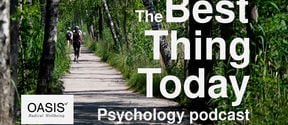Agreeing on guidelines for inclusive interaction in the course
Inclusive teaching practices are inseparable from high quality teaching practices, so inclusive teaching affects all aspects of a course and learning experience.

A student’s sense of belonging is strongly correlated with the ability to learn. The feeling of belonging produces feelings of empowerment, motivation and agency. Similarly, feelings of exclusion or marginalization hinder learning.
Measures to support student participation include
The teacher can promote community and inclusion in the course in many different ways, some of which are listed in the table below as well as in the guide produced by Nyyti. The student can also contribute to the emergence of community and inclusion in the group.
For some of us, it is important to belong to some permanent communities, such as the class of the degree program. For others, awareness of a community or experience that a community exists is enough for a sense of community. A sense of community doesn’t always show up as an activity, but it’s important to communicate that everyone has the opportunity to become part of the community. On the other hand, communality can also be considered as mandatory. In this case, it is important that the individual sees the significance of their own activities and involvement and is empowered and motivated by the activities of the community.
A question about inclusion was added as a common question to all course feedback surveys at Aalto in the beginning of academic year 2022-2023. The question reads: ‘Which factors in the course served to promote the accessibility of the teaching, encourage participation, and reduce discrimination (e.g., in the selected teaching and assessment methods, course material, or learning environment)?" The new question is a result of joint development work. After one term, the data collected were reviewed and categorized. Over 7000 responses of student feedback offer us a deeper understanding of the students' perception from teaching related inclusion. Here are some highlights:

Inclusive teaching practices are inseparable from high quality teaching practices, so inclusive teaching affects all aspects of a course and learning experience.

The Best Thing Today is a podcast series by Aalto study, career and advanced study psychologists.
A sense of community can also be supported outside the course. In many cases, loose-knit, low-threshold communities act as a factor in increasing a sense of community while increasing wellbeing in the communities. In university communities, this can be, for example, a curriculum development group, an academic guidance group or a leisure group in which everyone who is interested is welcome to participate in a multi-voiced, skilled and multi-faceted way. In addition to supporting wellbeing, the group acts as an empowerment and support agent.